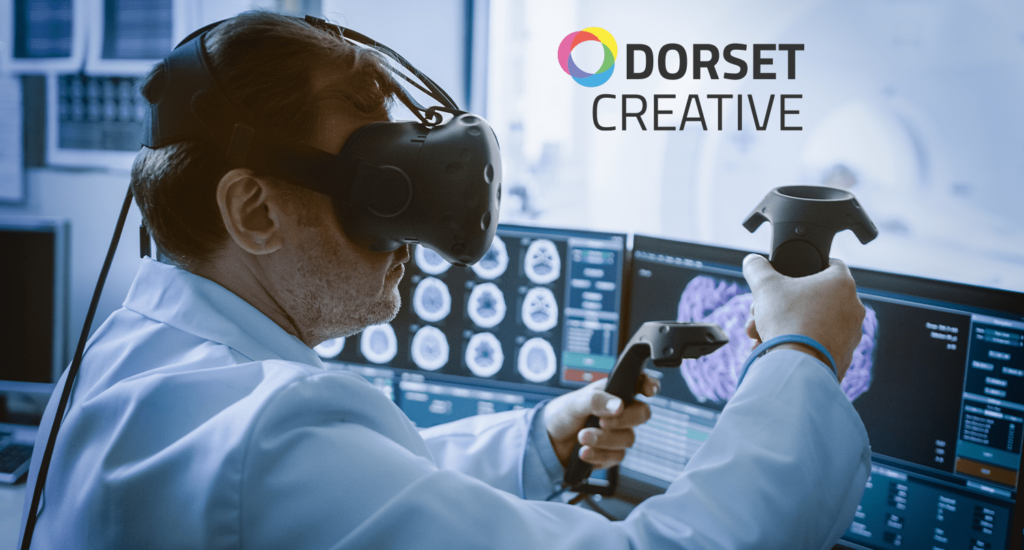Healthcare, a major adopter of VR technology, revolutionises medical training simulators, robotic surgery, pain management and treatment.
VR has a multitude of healthcare applications – from the healthcare professional to the patient. Though seemingly an extravagant or expensive solution, VR is surprisingly affordable and accessible to the general public.
Medical Training Simulators
VR can transport surgeons into the operating theatre, allowing them to practice surgery in extreme conditions without putting the patient at risk, since they would not physically present. Being immersed in the environment enables skills to be honed quicker than through watching demonstrations. The virtual procedures are reproducible, and performances can be recorded and used for assessment or evaluation, enabling trainee surgeons to enhance skills through improving the retention of complex information and accuracy of intricate movements. Healthcare can benefit from VR training by; optimising cost, improving educational quality, allowing long and efficient sessions, and increasing overall patient safety.
Robotic Surgery
Robotic surgery is an innovation whereby surgery is performed using robotic devices controlled by human surgeons, signifying fewer risks of complications during surgery as well as a faster procedure. The robots are accurate, capable of smaller incisions – reducing blood loss and faster recovery. Developers can use a pressure-sensitive trigger on a joystick to teach robots how to control grasping and articulation speed for picking up objects. Through motion tracking technology in VR controllers, robots can analyse and learn various movement patterns. In this manner, robotics and VR can combine to develop applications that deliver enhanced performance.
Pain Management
When people are engaged in an immersive experience, they tune out other stimuli, including their body’s pain signals, because areas of the brain that are connected to feeling pain are less active when immersed in a VR scenario. For example, VR is used as a medication-free tool for women in labour to help them cope with the pain of childbirth. One study found that when women had access to pain medication on-demand, using VR helped them reduce the amount of medication they needed to control their pain.
Treatment
VR’s ability to transport you elsewhere can be used to create powerful simulations of scenarios in which psychological difficulties occur. VR can improve phobias by flooding the patient with their fear and providing a fuller sensory experience that helps build recovering behaviours. A 2018 Journal of Medical Internet Research review of published studies concluded that VR, especially when combined with other psychological interventions, showed “potential for a real positive behaviour change for a range of mental health conditions”. As VR becomes mainstream, it’ll help drive its use and effectiveness as therapy and treatment, far beyond simple virtual therapy visits.
Despite clear progress and advanced techniques that virtual reality is bringing to the healthcare industry, it’s still in its infancy. VR is proving to enrich patients’ lives worldwide, largely due to the enhancement in medical training simulators and robotic surgery which continues to progress. Persisting research and development into technology will be life changing to healthcare.
For more information, visit www.dorsetcreative.co.uk
